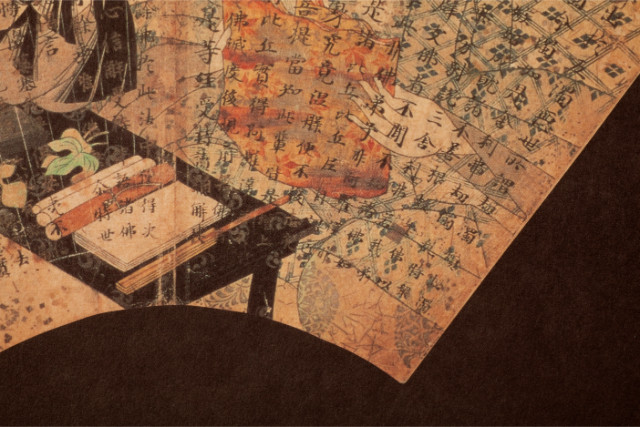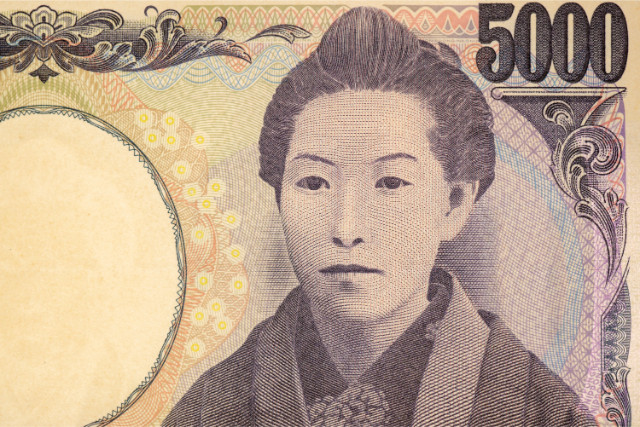Which writer do you think of when you think of Japanese literature? With more than a thousand years of written works, Japanese literature has a long and diverse history, producing many award-winning authors and works over the centuries. Discover more about the Japanese writers and their works that have shaped and been shaped by Japan’s history and culture.
Table of Contents
- Overview of Japanese Literature and Literary Awards
- Famous Works of Japanese Literature from Each Period
- 5 Japanese Works Known Around the World
- 10 Modern Japanese Writers to Know and Their Famous Works
- In Closing
Overview of Japanese Literature and Literary Awards

Let’s start with the basics. What is Japanese literature?
Japanese literature refers to literary works written in Japanese or written by Japanese people. It also refers to the study of literary works and their authors.
Japanese literature has a wide variety of genres. It includes not only novels and stories, but also essays and waka poetry, which has a form unique to Japan. Many works in Japanese literature depict the four seasons in Japan, the state of nature and detailed inner thoughts of individuals.
Notable Japanese Literary Awards

Japan has many literary awards. Among them, the most famous are the Akutagawa Prize, Naoki Prize and Rampo Prize for novels. These three literary awards are named after great Japanese literary authors. Along with many others, these awards continue to recognize great literary works every year.
The Akutagawa Ryunosuke Prize
The Akutagawa Ryunosuke Award was created to commemorate the achievements of Ryunosuke Akutagawa, a famous novelist of the Taisho era. It is commonly known as the "Akutagawa Prize". It’s a prize given to what are known as “pure literary works” - works written with the intention of being a form of art rather than written for the masses - that emphasize the fun and beauty of the text itself. Award-winning novels are announced twice a year.
The Naoki Sanjugo Prize
Commonly known as the “Naoki Prize”, this award is given to popular novels with a strong entertainment value. Since around 1970, works written by mid-career writers have been often selected, and in recent years, veteran novelists have also been awarded.
Edogawa Rampo Award
Commonly known as the "Rampo Prize," it is the highest honor given to Japanese mystery novels. It was established by the Japan Mystery Writers Association with the aim of promoting mystery novels, based on a donation from the famous mystery writer Edogawa Rampo. Many writers who won the Rookie Award have become some of the most popular mystery genre writers in Japan, such as Higashino Keigo and Ikeido Jun.
Writer's Pick
Famous Works of Japanese Literature from Each Period

Japanese literature has a long history, with a wide range of works from over 1,300 years ago to the present day. Here are just some of the many significant literary works from each period.
|
Period / Era Name |
Name of Work (Author) |
|---|---|
|
Nara |
Kojiki (compilation) Nihon Shoki (compilation) |
|
Heian |
Kokin Wakashū (compilation) Makura no Soshi (Sei Shonagon) Genji Monogatari (Murasaki Shikibu) |
|
Kamakura |
The Tale of the Heike (unknown) Tsurezuregusa (Yoshida Kenko) |
|
Edo |
Oku no Hosomichi (Basho Matsuo) Tokaido Naka Hizakurige (Jippensha Ikku) |
|
Meiji |
Botchan (Natsume Soseki) Maihime (Mori Ogai) Midaregami (Yosano Akiko) |
|
Taisho |
Rashomon (Akutagawa Ryunosuke) Kinosaki Nite (Shiga Naoya) |
|
Showa |
Sasameyuki (Tanizaki Junichiro) Kamen no Kokuhaku (Mishima Yukio) Kaze Tachinu (Hori Tatsuo) Ningen Shikkaku (Dazai Osamu) |
|
Heisei |
1Q84 (Murakami Haruki) Konbini Ningen (Murata Sayaka) |
The above works are only one small part of Japanese literature. Many other masterpieces are and have been loved by a wide range of generations.
5 Japanese Works Known Around the World
To delve a little further into specifics, here are 5 famous Japanese works known around the world - a great start into Japanese literary works.
1. Genji Monogatari (Murasaki Shikibu)

「源氏物語 Genji Monogatari」 or "The Tale of Genji" is a novel written by Japanese female writer Murasaki Shikibu in the middle of the Heian period, and is considered to be the earliest novel in the world. With a "realistic" narrative technique, Murasaki Shikibu tells the romance, glory and depravity of the upper-class aristocracy in Japan's Heian period through the perspective of the protagonist, Genji, and through it, captures the culture and life of the Heian period. "The Tale of Genji" had a great influence on Japanese literature that came after it, and it is still included in Japanese textbooks to this day.
2. Botchan (Natsume Soseki)
「坊ちゃん Botchan」was written by Natsume Soseki, who is considered one of the great writers of modern Japanese literature. The story is set in Meiji-era Japan, and begins with the main character, Botchan, who works as a teacher at a school in Shikoku. The vividly depicted characters, such as the boy with a strong sense of justice and the unique teacher who works at the school, are one reason why the work is so memorable. It is also praised as a masterpiece for the writing style. You can visit places in Matsuyama, Ehime today that were featured in the novel based on Natsume’s own experiences.
3. The Wind Rises (Hori Tatsuo)

「風立ちぬ Kaze Tachinu」or The Wind Rises is a novel by Tatsuo Hori, based on the author's real-life experiences. The protagonist and a woman named Setsuko meet at a summer resort, fall in love, and get engaged after returning to Tokyo. However, Setsuko is suffering from tuberculosis, which was said to be an incurable disease at the time. As the protagonist spends time at the sanatorium with Setsuko, he feels happy to be with her. The work exudes an unforgettable desolation while also masterfully bringing out the tenacity of human nature in the midst of cruel reality. The novel also gained a resurgence of interest when Studio Ghibli made a film with the same name partly based on the novel in 2013.
4. No Longer Human (Dazai Osamu)
「人間失格 Ningen Shikkaku」 or “No Longer Human” is a Japanese literary novel written by Osamu Dazai. The main character, who is not good at interacting with others, tries to open up by acting funny on purpose. He is unsuccessful, however, and instead becomes addicted to alcohol, tobacco, and illegal drugs, and eventually attempts suicide. The protagonist looks back on his life and says, "I've lived a life full of shame,"calling himself a disqualified human being. It is a work that depicts deep loneliness and sorrow.
5. Norwegian Wood (Murakami Haruki)
「ノルウェイの森 Norway no Mori」 or “Norwegian Wood” is a Japanese work by Murakami Haruki, published in 1987. The main character, Watanabe Toru, listens to the Beatles' "Norwegian Wood" on an airplane at Hamburg Airport and remembers his college days. It is a novel centered on his romantic interactions with Naoko, the girlfriend of his late best friend, and Midori, a classmate who captures his attention with her lively personality. It has been translated into various languages and is read all over the world.
10 Modern Japanese Writers to Know and Their Famous Works
And if you like to read several works by the same author, here are 10 Japanese writers who have several acclaimed works, significant to this day.
Higuchi Ichiyo

A Japanese female writer of Meiji period, she was one of the early pioneers of Japanese modern realism literature. She wrote 22 short novels and a large number of essays and poems in her life before dying of tuberculosis at the age of 24. To commemorate Higuchi Ichiyo's achievements, the 5,000 yen note currently in circulation features her portrait.
Notable Works: Otsugomori (The Last Day of the Year), Takekurabe (Growing Up), Jusanya (The Thirteenth Night)
Akutagawa Ryunosuke
Akutagawa, mentioned above as the namesake of the Akutagawa Prize, is considered a master of Japanese literature spanning the Taisho and Showa eras. In his writing career, Akutagawa frequently wrote masterpieces. In the early stages, most of them were historical novels that focused on the evils of the times. In later works, he expressed a sense of disillusionment with the injustice of society. Under the tutelage of Natsume Soseki, together with Mori Ogai and Natsume Soseki, he became the three great masters of Japanese literary circles in the early 20th century.
Notable Works: Rashomon, Kumo no Ito (The Spider’s Thread)
Yasunari Kawabata

In 1968, Yasunari Kawabata became the first Japanese person to win the Nobel Prize in Literature. His writing is said to be a pinnacle of Japanese literature, with his delicate expressions depicting Japanese landscapes and people's feelings especially through stream of consciousness.
Notable Works: Yukiguni (Snow Country), Senbazuru (Thousand Cranes), Koto (The Old Capital)
Kenzaburo Oe
In 1994, Kenzaburo Oe was the second Japanese to win the Nobel Prize in Literature. He published his short story Shiiku (The Catch) in 1958, at the age of 23, the youngest person to win the Akutagawa Prize. As a supporter of post-war democracy, he is a writer who actively speaks out on social issues both in Japan and abroad, his anti-war stance and concern for humanity deeply influencing his works.
Notable works: Shiiku (The Catch), Konjinteki na Taiken (A Personal Matter), Hiroshima Noto (Hiroshima Notes)
Haruki Murakami
One of the most famous Japanese contemporary literary writers in the world. Murakami Haruki’s novel "Norwegian Wood", published in 1987, sold over 4 million copies in Japan alone and has been widely discussed around the world. Murakami is widely regarded as a future Nobel Prize winner for literature, and the film "Drive My Car" based on his short story "Men Without Women" won the Best Screenplay Award at the 74th Cannes Film Festival and was nominated for the 94th Oscar Academy Award for Best International Film.
Notable works: Norwegian Wood, 1Q84, Kafka on the Shore, The Wind-Up Bird Chronicle
Higashino Keigo
One of the most famous mystery writers in contemporary Japanese literature, Higashino Keigo is not only known for his works but also the many film and television drama adaptations of his works. He’s won many awards including the Edogawa Rampo Award and the Naoki Prize.
Notable Works: Yogisha X no Kenshin (The Devotion of Suspect X), Akui (Malice), Namiya Zakkaten no Kiseki (The Miracles of the Namiya General Store)
Yoshimoto Banana
Famous in Japan but not quite as known overseas as many of the others on our list, Yoshimoto Banana writes about familiar and relatable human emotions - grief, love, comfort - but told often through interesting and unique scenarios. She has won several awards, including the Kaien Newcomers’ Literary Prize and Izumi Kyoka Prize for Literature.
Notable Works: Moonlight Shadow, Kitchen, Moshi Moshi
Ishiguro Kazuo
Sir Kazuo Ishiguro, who won the Nobel Prize for Literature in 2017, is a novelist who was born in Nagasaki Prefecture but grew up in the U.K. with British nationality. He writes in English, and was knighted for his contribution to literature. In 1989, at the age of 35, he won The Booker Prize for The Remains of the Day.
Notable Works: Never Let Me Go, The Remains of the Day, Klara and the Sun
Minato Kanae
Minato Kanae made her mark with her debut novel, Confessions, which was later turned into an acclaimed film, and has continued to surprise and impress with subsequent works. Her novels are mostly mysteries and thrillers that both horrify and fascinate readers, and many have been adapted into films and television series.
Notable Works: Kokuhaku (Confessions), Shokuzai (Penance), Shoujo
Murata Sayaka
Although having debuted as a writer in 2003, Murata Sayaka became widely known in 2016 when her novel Konbini Ningen (Convenience Store Woman) won the Akutagawa Prize. Since then her works have been translated into English and have also become popular overseas.
Notable Works: Shiro-iro no machi no, sono hone no taion no (Of Bones, Of Body Heat, Of Whitening City), Konbini Ningen (Convenience Store Woman), Chikyu Seijin (Earthlings)
In Closing

There are so many more gems to explore in Japanese literature. You can learn so much about Japanese culture as the literature reflects the times, values and events of history along with complex human thoughts and emotions. Among them, there are works that were created more than 1000 years ago and are still being read today. At the same time, Japanese literature continues to shine as younger generations share their stories through different mediums, not just physical publications, but through social media and other means! Come explore Japanese literature and find a favorite author or work!












.png)























